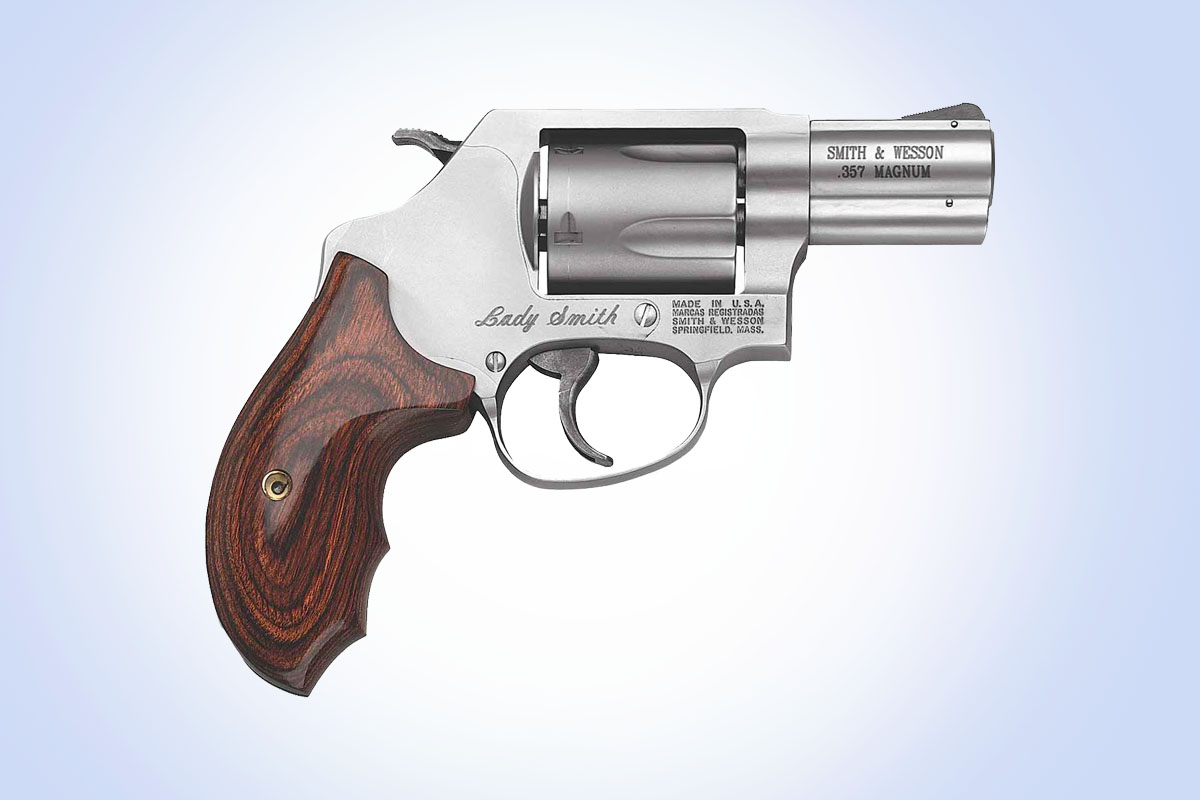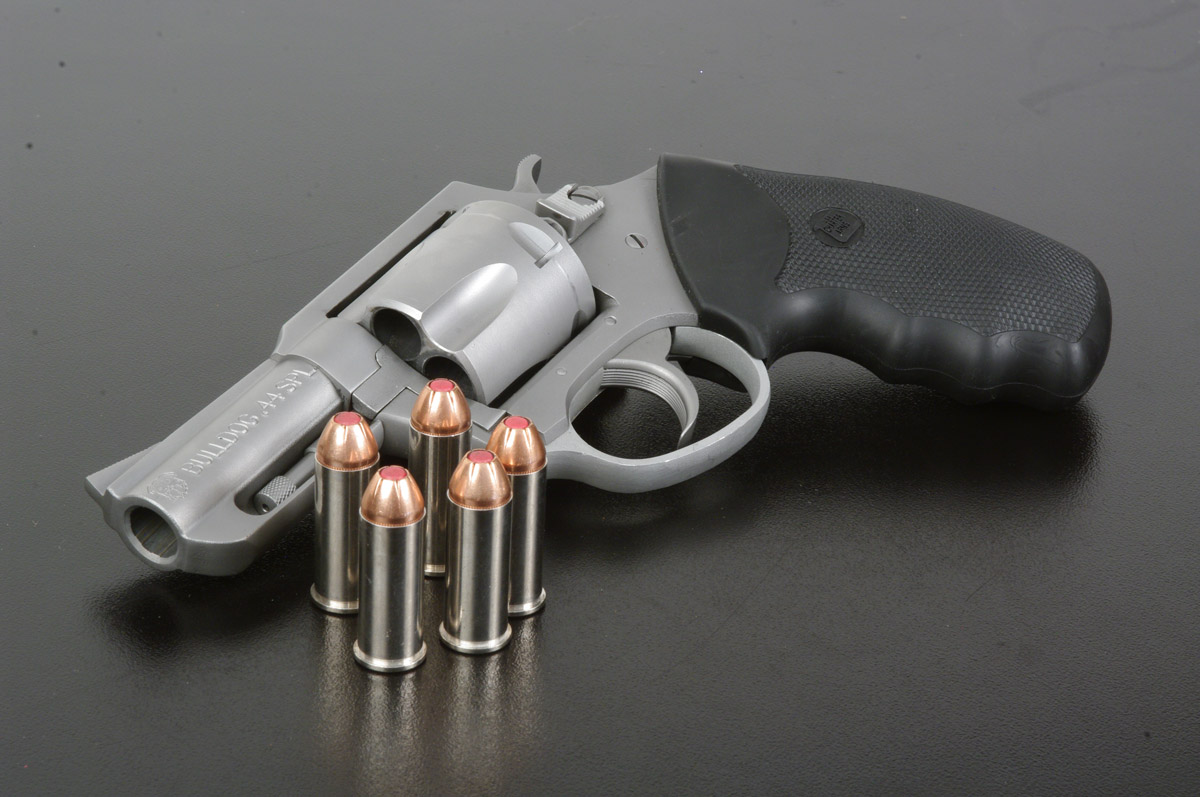Best Ccw Revolvers - We may earn a commission when you make purchases through links on our site. Learn more here.
In this day and age of polymer-framed semi-autos, is there room for an old-fashioned revolver? Many of you reading this may not be thinking, but I'm asking you not to. There is something to be said for a carry gun that just pulls out (or shoots through a pocket, hides) and fires with a single pull of the trigger. No fuses. No wonder if you forgot to load the camera. You also don't have to worry about misplacing the magazine. Just drag and tap. In other words, this can be a great concealed carry revolver with no problems.
Best Ccw Revolvers

OK, I'm oversimplifying, but you get the idea. Honestly, there are a lot of semi-autos out there that function almost like revolvers… point fire. However, the comments regarding chamber loading and magazine placement still apply. In the opinion of many shooters, a semi-auto has more ways to fail to fire when you pull the trigger than a revolver. The modern self-loader is extremely reliable, but there are still thousands of shooters who trust their lives to a revolver. Call them old fashioned or whatever, but a lot of people only carry revolvers. Anyway, I'm fine. In this article we will consider:
Mm Revolvers That Are Perfect For Self Defense
Let's review some of the considerations, definitions, and other factors involved in carrying a revolver, and then look at some guns.
Subscribe to our newsletter for gun deals, educational content, hands-on reviews and law change news!
It's actually quite simple. A carrier revolver usually has a four-inch or shorter barrel. Two other features that help define a carry gun are the grip and the frame. Most carry revolvers have a round stock, a shortened grip and a smaller frame for good concealment. Hogue-type rubber grips are generally common, although some of the more expensive custom guns may have exotic wooden grips. Crimson Trace or other laser sights are also popular. Most snubbies are chambered in .38 Special, with .357 Magnum and .44 Special produced in smaller numbers. There are even rifles chambered for 9 mm and .45 ACP cartridges, but they are not included in the main snub-nosed revolver calibers due to the fact that these rimless cartridges require special care in the revolver cylinder to function properly.
I know that for a certain segment of shooters, the best carry choice is a Smith and Wesson Model 19 four-inch revolver or a similar pistol in .357 Magnum or .38 Special. A weapon of this barrel length, with higher barrel velocities and an increased aiming radius, can make a great concealed carry weapon. The problem is hiding it. A four-inch barrel is more difficult to conceal than a 2-inch barrel, especially inside the waistband.
Back To Basics: Running The Single Action Revolver
The cylinder, being the widest part of a revolver, is usually the most difficult part of the gun to conceal, and this size is usually independent of barrel length. The barrel width of a four-inch revolver is generally the same as the barrel width of a two-inch pistol of the same caliber. Most people I know who carry a four inch revolver carry it off the belt under their coat or clothing. Belt carry is a little more difficult due to the width of the cylinder and the length of the barrel, but it can be done. If you carry a larger revolver, great - I'm glad it works for you.
For our purposes, however, I will limit the discussion to those guns commonly referred to as snub nose revolvers. These are guns with two to three inches of barrel, plus or minus, and an overall barrel width of about 1.4 inches or less. This includes many weapons and models, but we will try to narrow it down to ten specific weapons. Another point I should mention is that unlike my semi-auto handgun comparisons, I will not provide a table of specifications for length, width, power, etc. for each gun. I will mention the important facts about the weapon, but when we look at the general classification of revolvers known as kirpats (or kirpats), the sizes are generally quite close. To be safe, I will point out the differences.
We settled on a barrel width of about 1.4 inches as part of our definition of a carrier revolver. But is there anything special about that number when several very popular semi-autos have roughly the same width? Why is it harder to hide a snubby when both are the same width?

There's a reason a revolver can be a little harder to conceal, even though it's the same width as a semi-auto. The revolver is only so wide in the barrel... the rest of the gun is flat. This can make it easier to make a gun impression, especially in a thin pocket holster. Some people will see the bulge in the barrel and immediately "pretend" you're carrying a gun, because that's what a gun looks like, right? Those same people might see a flat dent in your pocket and not think twice about it or recognize it as a semi-auto tucked in there in a pocket holster. The reason is that a semi-auto has almost the same width all the way around as a mobile phone. This is the difference between them.
Best .357 Magnum Revolvers For Self Defense
In my personal experience when I wear my Smith & Wesson Model 638 J frame I get a "cylindrical bulge" that I have to hide. When I carry the Ruger LCP-Max in a pocket holster, it feels like I have a large cell phone in there. Only you decide whether or not you want to carry a revolver - everyone is different. One way that works for some people to carry a wheel gun is to holster it over the shoulder. If you are wearing a jacket or other covering clothing, a shoulder holster may be an appropriate way to carry your weapon, as the cylinder "bulge" will not be visible.
Most compact or subcompact handguns hold anywhere from six to fifteen or more rounds in a magazine. To reload, you press the magazine release button, the empty magazine falls out, and you insert a new, full magazine into the gun and release the bolt. Now you have so many rounds ready again.
The revolver differs somewhat in capacity and magazine capacity. Unless you have a larger seven- or eight-shot revolver, most smaller, easily concealed pistols hold five to six rounds in the cylinder. Once you've fired them all, you press the barrel release button, spin the barrel, eject the empty cases, and reload the chambers.
There are speed loaders and speed strips that will help you charge all cameras at once or two at once, but (unless you've really spent a lot of time learning how to reload) it won't be as fast as slamming a fresh magazine. Please understand - I'm talking about the average Mr. or Mrs. Concealed Vehicle, not a competitive shooter like Jerry Miculek. He can reload his wheel cannon faster than most of us can reload our semi-automatics. For most of us, a semi-auto will reload faster.
Reasons You Should Carry A Revolver
Okay... we know a revolver can be a little harder to conceal and maybe a little slower to reload. Does it have any advantages?
That is exactly the case. Imagine this imaginary scenario: you're standing in line at a bank when a clearly deranged gunman walks in and starts shooting people in a frenzy. You put your hand on your junk in your jacket pocket just as he turns to you. No time to draw! With a revolver, you eliminate the threat by shooting in your jacket pocket without even drawing your gun (read more about concealed carry insurance). You just saved your life and probably a few others.
It's a bit far-fetched, but there have been times when a legally armed concealed carrier has had to shoot through a jacket, coat, purse, etc. A revolver can do this, especially with an internal or closed trigger. You can get one shot out of a semi-auto, but chances are the bolt will hang in your pocket/purse, etc., rendering it useless if more than one shot is needed.

Another advantage that is not obvious is that the pistol manual is generally a little less complicated for a revolver. I have found that it is a little easier to introduce a shooter to the sport when I use one of my reduced load revolvers or .22. When I first gave them a semi-auto, some of them returned saying it looked too complicated. Don't get me wrong, anyone can learn to shoot anything given enough time and practice. That doesn't make me judgmental - I own and shoot a lot of semi-auto pistols - it's just what I've observed in my limited experience.
Is The .357 Magnum The Best Option For Personal Defense?
A revolver with a longer barrel will come in handy here, as there is one caveat
Best 1911 ccw holster, best ccw insurance, best ccw sling bag, best ccw bag, top ccw revolvers, ccw holsters for revolvers, best ccw purse, best non resident ccw, best ccw belt, best ccw backpack, best ccw holster, best ccw holster for fat guys
0 Comments